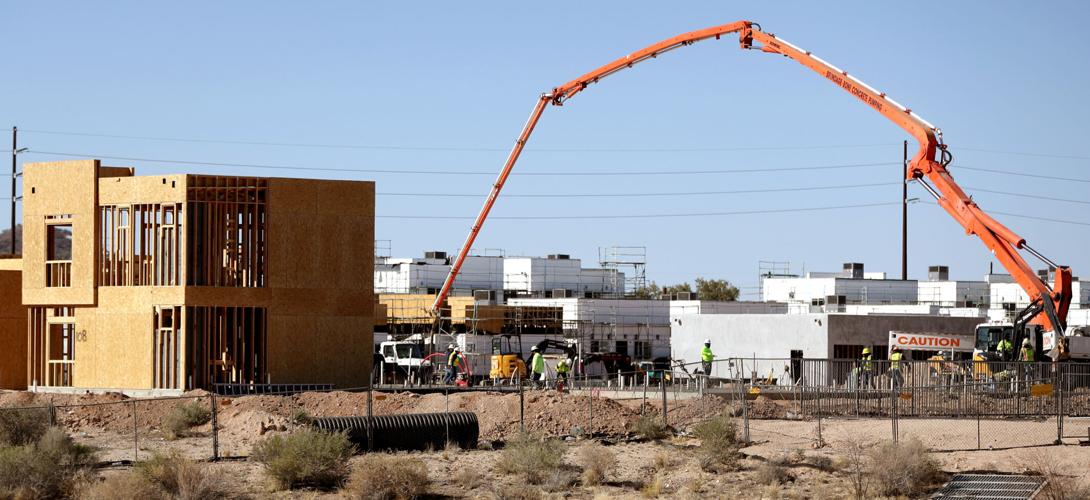Tucson and other cities seem to have defeated a legislative effort to take away local power over zoning and housing.
That’s good for them, but it also means the burden remains on the cities.
Cities need to make the moves that will get more housing built, especially the affordable kind, for their increasingly outpriced residents.
They need to resist the inevitable efforts to reject new projects in the name of neighborhood preservation.
They need to open up the zoning codes and allow people to live more easily on the plentiful land in cities like Tucson.
It’s going to take some resilience. But in Tucson, the council has been moving that direction, and has a chance to go further next week. They probably simply need to move faster if they’re going to make a dent in our housing problem.
A bill by Sen. Steve Kaiser, a Phoenix Republican would strip cities like Tucson of much of their power to control zoning. It received a bipartisan rejection in the Senate Monday, though it still could be resurrected.
This bill, a voluminous one that came in the form of a strike-all amendment to SB 1117, emerged from a series of hearings Kaiser held last year as head of the Legislature’s Housing Supply Study Committee.
Kaiser’s conclusion, informed in part by the housing industry itself, is that one of the biggest obstacles to affordable housing is the cities. So he proposed what amounted to a state takeover of important parts of the zoning code, proposing to remove the cities’ ability to say no to housing developments in many cases.
Among the bill’s many provisions, it would:
Pre-empt the cities’ authority over zoning
Reduce the minimum size of a lot where a home could be built, to 4,000 square feet
Prohibit cities from imposing design standards for homes
Eliminate requirements for off-street parking
Require that accessory dwelling units (casitas or guest houses) be allowed
The former attorney for the Town of Marana, Frank Cassidy, argued during a Feb. 8 hearing that there was no guarantee the bill would lead to more affordable housing.
Speaking on behalf of the League of Arizona Cities and Towns, he said, “This is basically a nuclear option to allow a whole bunch of housing, but not saying it has to be affordable. It’s a trickle down argument.”
Kaiser responded that most of the housing it would enable would be in the “missing middle,” the starter homes and moderately priced category that have dwindled as prices rose and building slowed.
After the bill failed on the Senate floor, Sen. Anna Hernandez, the only Democrat who voted for SB 1117, put the challenge to cities this way via Twitter:
“As the cities that heavily opposed this bill work on their new FY budget, I hope housing & homelessness are the top invested line items. Otherwise all the opposition I heard will show me that cities aren’t authentic in their stance.”
In Tucson, the city has already adopted one of Kaiser’s proposals: The universal permission of accessory dwelling units. It took a lot of debate in 2021, and some watering down, to get it passed.
The idea was that people could build guest houses in their own backyards, many of which are generous in the older parts of Tucson, and these could serve as housing for older relatives or students or others needing relatively inexpensive housing.
Some people worried neighborhoods would be roiled by new construction. It hasn’t happened, at all.
At a March 6, City Council study session, Planning Administrator Koren Manning noted that the city received a total of 61 applications for permits for accessory dwelling units in the program’s first year. While 24 were approved, the rest were under review.
None have been built.
The fact is, it can be expensive to build anything these day, even a 750-square-food guest house. Tucson isn’t a rich city. So of course the nightmare of pervasive backyard construction didn’t take place.
Now, Mayor Regina Romero and council members are exploring the idea of reducing or eliminating impact fees and other costs so that more people can afford to take up the program. They want to build an inventory of pre-approved designs as well.
It’s worth keeping this ADU example in mind as the city moves ahead next week to consider a few reforms of city’s zoning laws. Among the changes proposed:
Remove setback requirements that make it harder to build townhouses
Reduce parking requirements for small, multi-family housing developments
Allow vehicle shade structures up to 20 by 20 feet to be built in front yards detached from houses
Standardize the setbacks required on major Tucson corridors, making it easier to build dense development along those routes.
None of these is a revolutionary change or as sweeping as the proposals in Kaiser’s bill. They would start to make it easier, though, to build more housing, more densely in a city that needs to evolve.
Romero recognized this when she referred to Tucson as a “work in progress” when it comes to being a more walkable, urban city.
“I’m more than happy to support these changes and look forward to seeing more coming through,” she said.
That really is the issue. Maybe the answer to our housing supply problems isn’t to give the state control over the cities’ zoning and housing requirement. But as the slow uptake of the casita zoning change shows, incremental change may not be enough.
We probably need to move faster to produce adequate housing and the Tucson of the future.
Watch now: Tucson City Council discusses ways to make casitas more affordable during a one-year review of the secondary homes' implementation. Video courtesy of city of Tucson.





